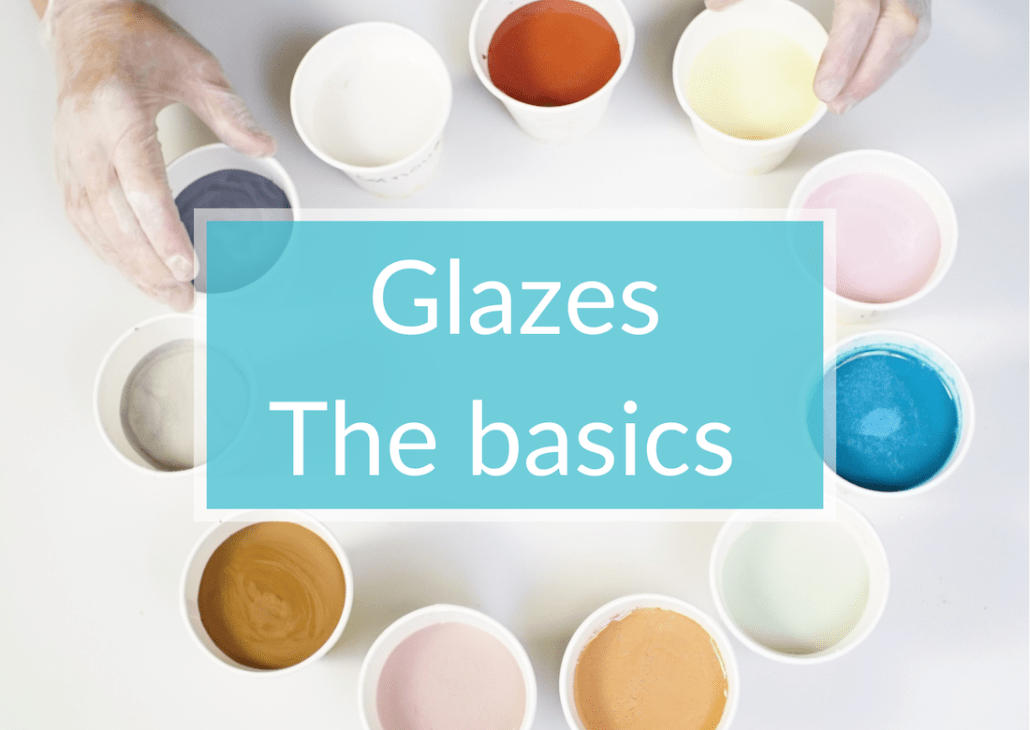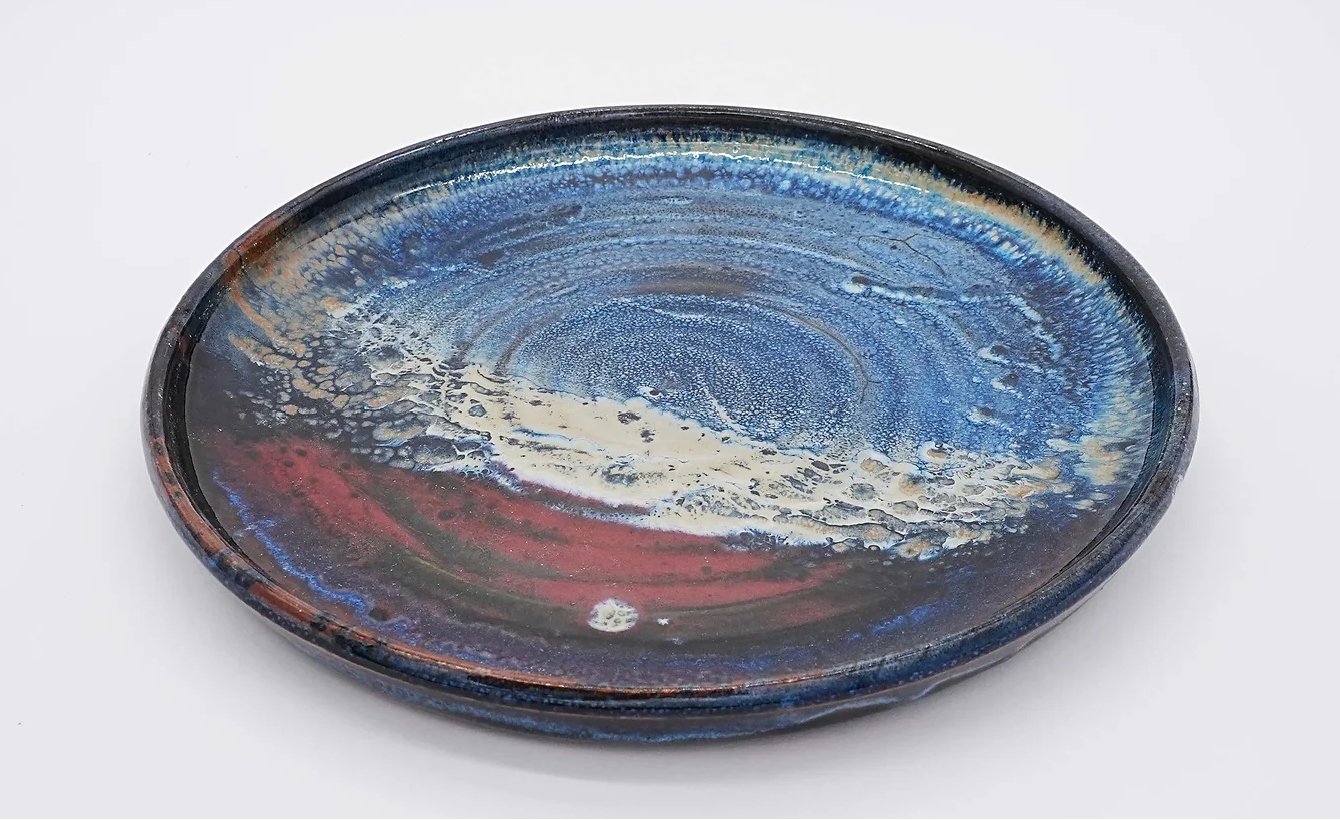Design in ceramics: symmetry and asymmetry
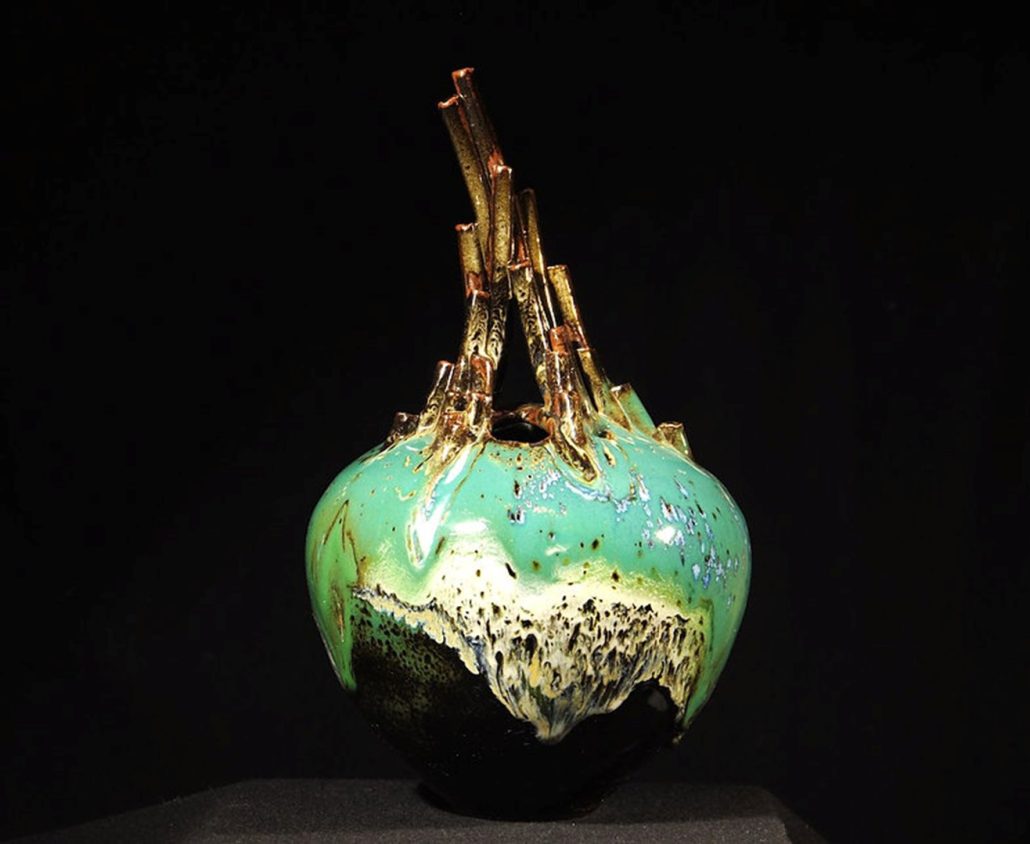
Summary
2 — The art of asymmetry in ceramic design
- Is the asymmetry of your creations controlled or accidental?
- Tips for creative asymmetry
- What are the artistic effects?
3 — Nature: a reflection of asymmetry or symmetry?
4 — Artistically, what can be made of the symmetry and asymmetry found in nature?
5 — Enriching textures and colours
6 — Asymmetry used for a new purpose
Introduction
During a recent course at Créamik school, a fundamental question was raised: the harmony of forms, and more specifically, the role played by symmetry and asymmetry. The quest for a perfectly centred and symmetrical form is often a major challenge for any ceramicist. This symmetry, however, is not an end in itself; it represents a starting point, a foundation from which the artist can choose to build on or intentionally deviate from, exploring the richness of asymmetry.
This article delves into the world of ceramics to reveal how symmetry and asymmetry, far from being mere aesthetic concepts, are in fact dynamic forces that shape the beauty and character of a piece. This is not intended to be an exhaustive study on the subject, but rather a subjective exploration of how these two forces coexist harmoniously, each bringing its own emotion to the finished work.
1 — Symmetry in pottery
The beauty of symmetry
In pottery, symmetry is often associated with harmony and balance. A symmetrical pot, vase or even sculpture exudes a sense of calm and perfection. Precisely centring clay on the wheel is the first step: it ensures a uniform, balanced piece. This visual harmony born of symmetry speaks to a deep aesthetic sense, often linked to our instinctive appreciation of balance.
Working techniques
To achieve perfect symmetry, several techniques and tools are essential:
- Symmetry begins with centring the clay, aligning it around the axis of rotation.
- During this process, measuring and shaping tools such as callipers, kidneys and ribs help to measure and maintain symmetry throughout the shaping process. They permit adjustments as the piece takes shape.
- Keeping the clay centred involves constant, fluid and controlled movements. Mastering hand pressure and controlling the wheel’s speed are essential for creating symmetrical shapes.
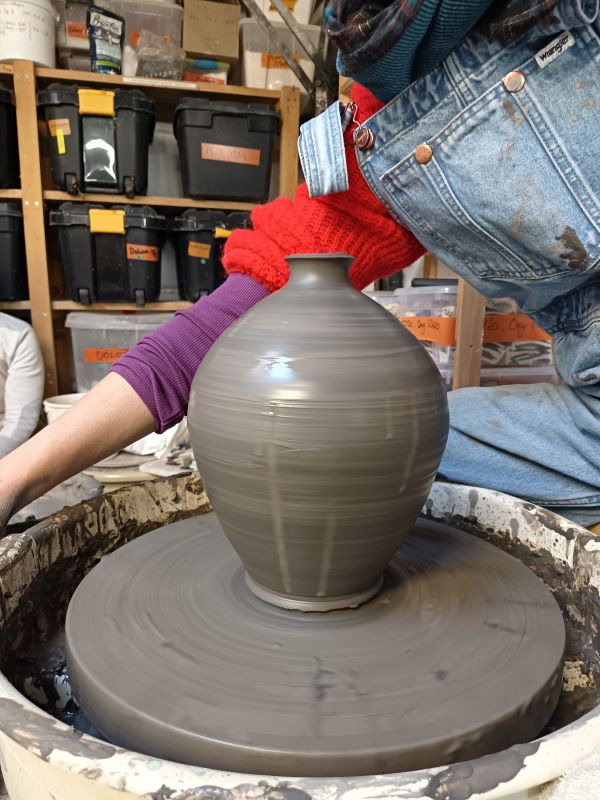
At Créamik school, students first learn perfectly symmetrical shapes. It’s hard work and takes a long apprenticeship. In this photo, the challenge of the day was to shape a lamp base using 1.6 kg of clay. The task becomes harder with larger amounts of clay. It makes you see how difficult it is to abandon perfect symmetry when its achievement demands so much effort.
Why focus on symmetry in pottery?
Symmetrical pieces are often perceived as aesthetically elegant and a reflection of hard-won skill. We are always beguiled by the creation of a piece that turns perfectly on itself. The larger the piece, the greater our admiration. Some potters turn this process into exciting challenges that can be followed on social media. In decorative art, symmetry can act as a focal point, drawing the eye and providing visual balance to the whole of the piece. Furthermore, a perfectly centred piece offers structural stability, which is particularly important for utilitarian items such as bowls, vases, and teapots.
By mastering the art of symmetry, potters can not only create works of great beauty, but also explore the fundamentals of balance and proportion.
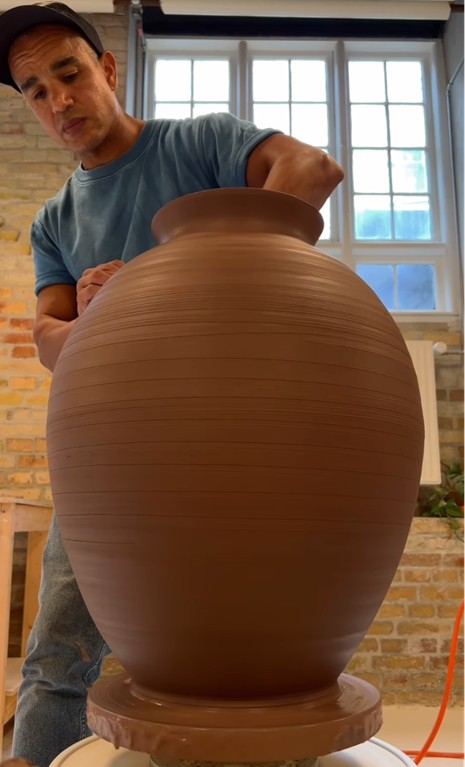
2 — The art of asymmetry in ceramic design
Asymmetry in pottery is a bold and captivating form of artistic expression. Far from being a flaw, it adds uniqueness and dynamism. In mastering asymmetry, every unaligned curve, every shifted angle is the result of a conscious decision, creating a visual dialogue that defies our usual expectations of balance and harmony.
On the other hand, accidental asymmetry, often the result of chance or experimentation, can bring an unexpected and organic beauty, reflecting the natural process of creation.
Is the asymmetry of your creations controlled or accidental?
The potter who decides on asymmetry deliberately manipulates the shape to create a specific effect. It can be done on a perfectly centred, symmetrical piece. This decision is made as part of an artistic project. If it is accidental, it is often the result of some spontaneous movement, and could be called a deformity rather than asymmetry. When throwing, it is perceived as a mistake, even if the resulting effect is interesting. Distortion may appear during drying and then firing. There is no shortage of opportunities for our pieces to become warped. The potter is rarely satisfied when this is not the result of a creative choice.
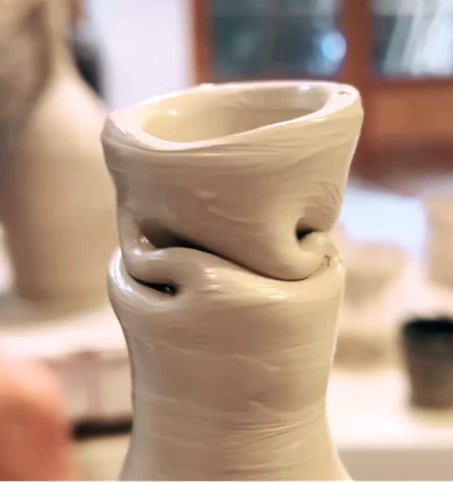
Beginners can easily end up with this shape, it’s not deliberate. However, with a transparent glaze, this piece has a drapery effect that is difficult to reproduce once you’ve mastered centring.
Tips for creative asymmetry
Incorporating asymmetry into your work requires a knowledge of the material, an understanding of forms and an open mind.
- For intentional controlled distortion: after centring and shaping your piece, deliberately introduce deformation. This can be done with hand pressure, or by using tools to alter the shape on the wheel.
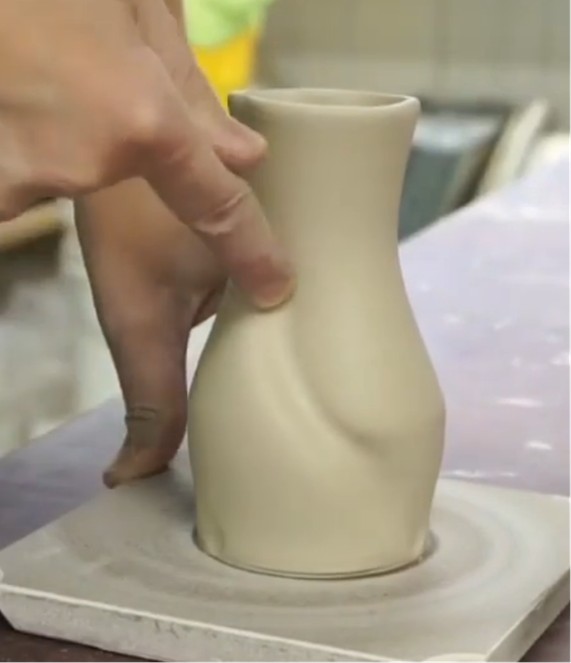
gives a new charm to this pretty vase.
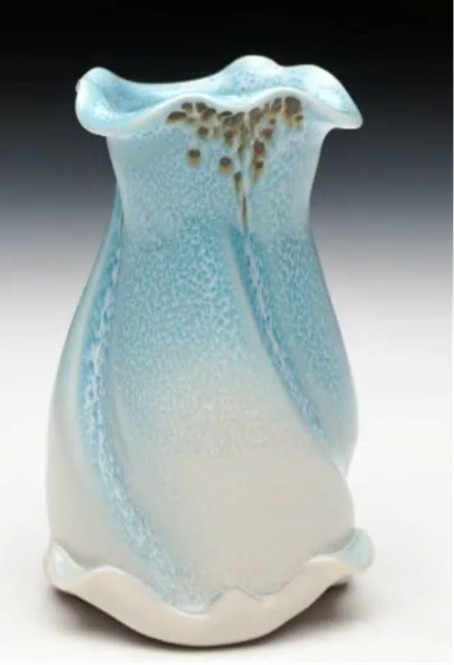
- With a piece already thrown, you can decide to make additions: attach a detail that will break its symmetry – asymmetrical handles, sculptural additions, or even different textures on different sides of the piece.
What are the artistic effects?
The aim of our labour is to create a piece of work. A successful piece of pottery gives full meaning to the effort that goes into making it. Asymmetry is a creative tool that can symbolise movement, vital energy or even a certain narrative. It surprises, catches the eye and invites further exploration; it asks, especially in an art form that initially requires such perfect symmetry: ‘What did the artist intend by these distortions?’
On his Instagram account, won_.studio shows his absolutely perfectly thrown porcelain pieces. The artist then proceeds to create distortions, which everyone can interpret in their own way:
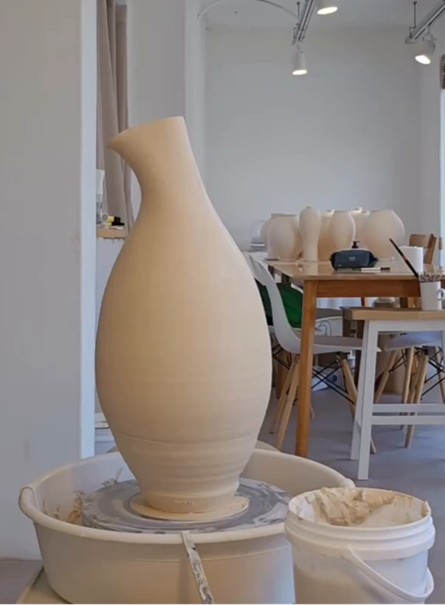
It can also be very interesting to create an organic asymmetry by letting the piece respond to gravity in a natural way during drying or firing. It’s a gamble: how far can you let a piece warp without ruining it? At what point do distortions embellish a piece or, on the contrary, spoil it?
Ultimately, what are we looking for with asymmetry? Perfect symmetry can be boring: with asymmetry, we’re looking for the original, the off-beat, the beauty of imperfection and uniqueness. It opens up an unlimited field of expression in which form, texture and even gravity itself become partners in the creative process.
Let’s admire once again the work of won_.studio, which destroys one symmetry to create another, inventing an original object. On his Instagram account, he films his work making ball vases the necks of which are displaced, with a completely surprising end result. It’s reminiscent of those armchairs so characteristic of the 70s.
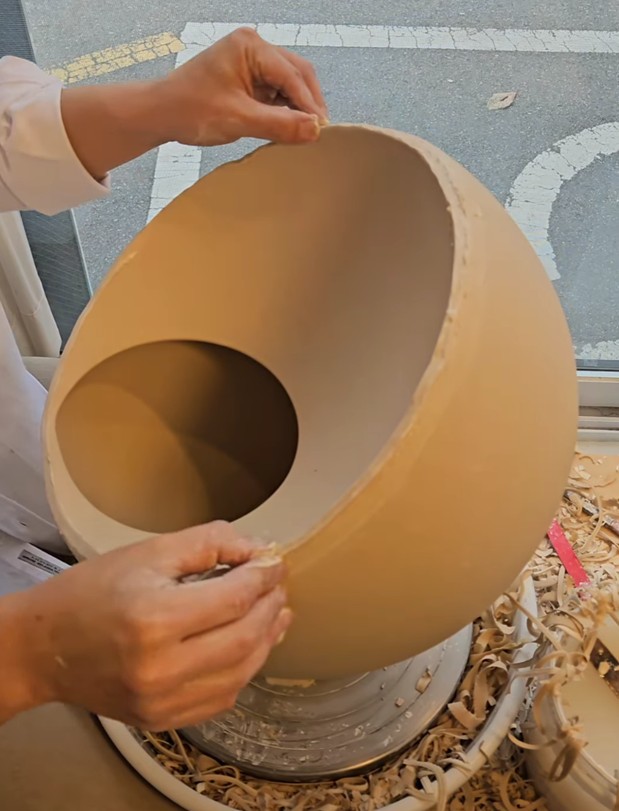
3 — Nature: a reflection of asymmetry or symmetry?
As we saw in a previous article, nature is an inexhaustible source of inspiration for potters. When it comes to symmetry and asymmetry, nature is an undisputed master! In its vast repertoire, it harmoniously combines these two characteristics, creating shapes that can be both in equilibrium and surprising.
Who hasn’t marvelled at the geometric patterns of a snowflake? They exude a sense of order and perfection. Yet nature is also a master of asymmetry. A tree that grows and bends in response to its environment, particularly the force of the wind; a shoreline irregularly eroded by the sea – these asymmetrical forms tell a story of growth, adaptation and change.
4 — Artistically, what can be made of the symmetry and asymmetry found in nature?
Ceramicists can draw inspiration to create works reflecting the diversity and complexity of nature.
- Use symmetry to achieve harmony: inspired by natural symmetry, potters can create pieces evoking order and tranquillity. Working in series is a process that achieves this objective. Some people find production throwing monotonous. Repeating identical pieces in series reveals great mastery and can be a source of inner peace for the potter. Some discover harmony where others only see repetition.
- Introduce asymmetry, movement and imitation of life: by drawing inspiration from the splendours of nature, ceramicists can bring unique dynamism to their pieces. A slightly asymmetrical vase that evokes the wind, a dish with an uneven rim can recall eroded rocks, or a shape reminiscent of a shell…
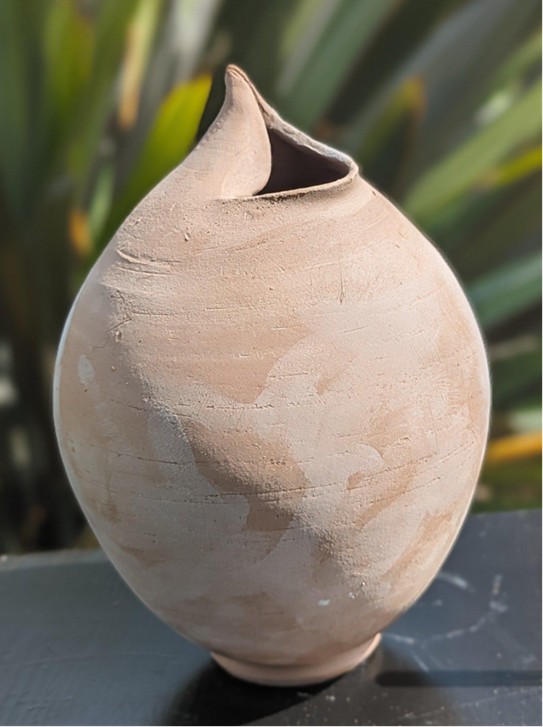
At Créamik, but also in his online course, Matthieu conjures shapes that result from his observation of nature. This is what he calls the shell vase. A beautiful egg-shaped form is thrown, and during drying, the symmetry is broken to create an opening reminiscent of a shell.
5 — Texture and colour enrichment
In addition to shapes, textures and colours inspired by nature add a real artistic dimension to ceramic works.
Textures
Surfaces can be textured to imitate the appearance of sea foam or the rough bark of a tree:
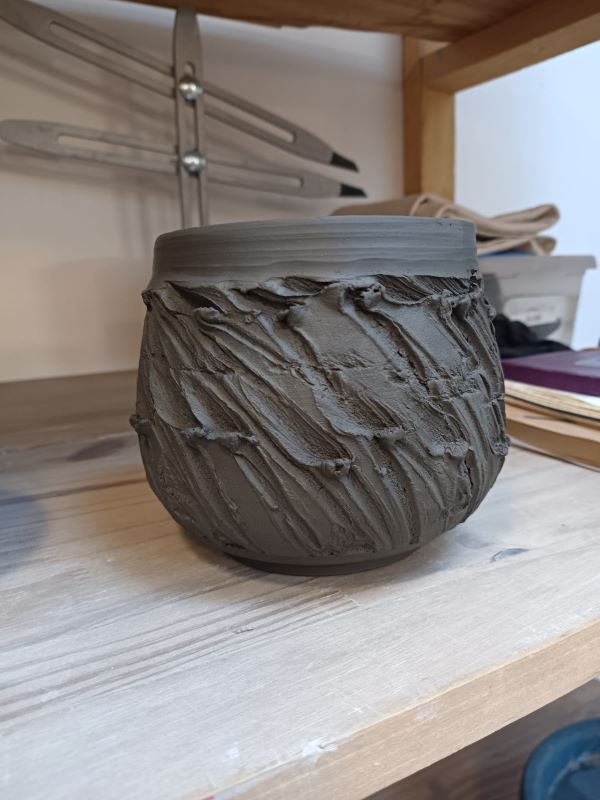
This week, Créamik students began working with textured surfaces. In this piece, the textures are reminiscent of tree bark, enriching the symmetry.
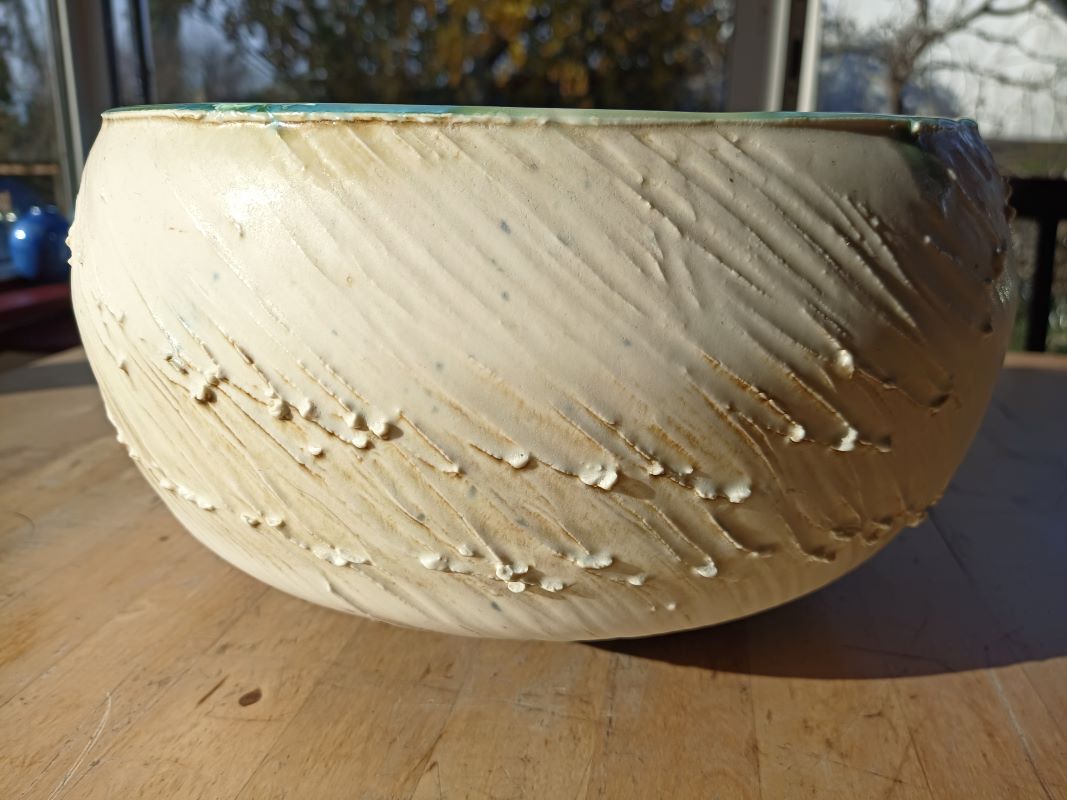
Glazing is a key source of symmetry and asymmetry. A perfectly symmetrical shape is thrown on the wheel, and asymmetry is introduced at the glazing stage. This piece by Matthieu illustrates this. A crystalline glaze has been applied to a simple, perfectly thrown piece. This example is all the more interesting as, in nature, crystallisation is itself an example of the coexistence of symmetry and asymmetry.
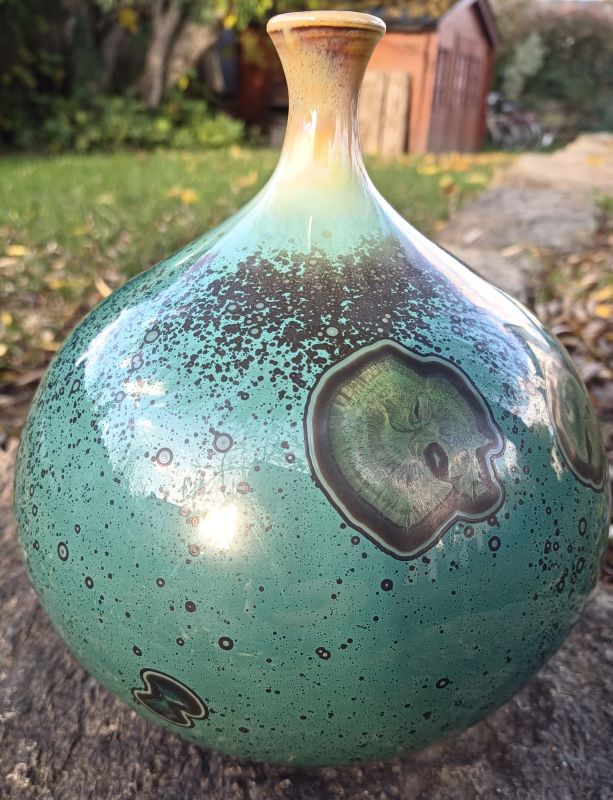
Colours
Working with glazes allows potters to explore an unlimited range of possibilities in terms of creativity, inventiveness, and aesthetic effects. By drawing inspiration from the shapes, textures and colours of nature, ceramicists create works that not only imitate the beauty of the natural environment, but also evoke feelings and stories associated with it. Artistic interpretations like this serve as a bridge between ceramic art and the natural world. They enrich the visual and emotional experience of those who interact with them.
6 — Asymmetry used for original purposes
Beyond the interpretation of nature or creating purely aesthetic effects, asymmetry can arise from new conceptions, from a desire to construct new meanings. An original example: couples embrace and kiss above a perfectly thrown shape: the imprint of their embrace gives substance to their love. The Instagram account of patrickjohnstonceramics contains many examples like this. They have a beauty more to do with the beauty of feelings than pure and simple aesthetics:

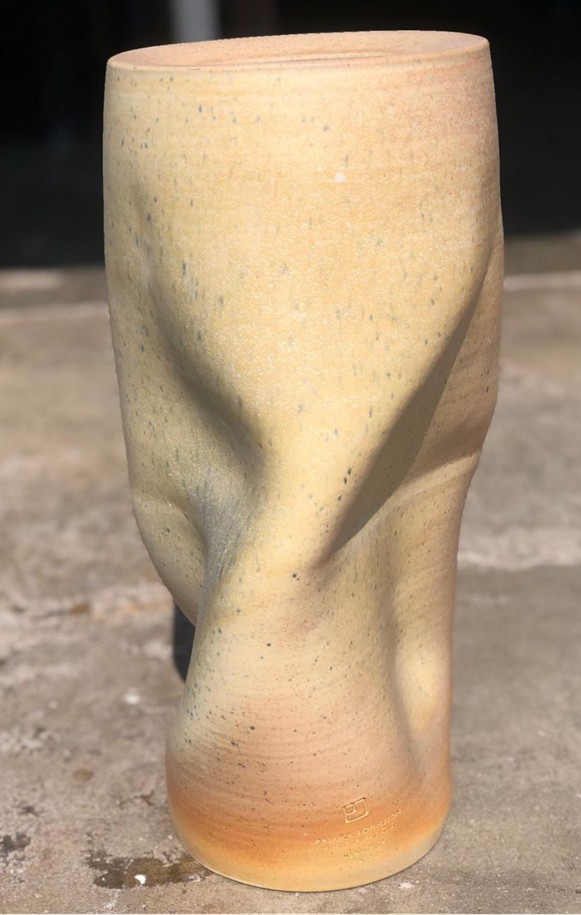

Conclusion
Symmetry and asymmetry in pottery, far from being merely technical, are artistic expressions reflecting the diversity and complexity of our world. Symmetry, with its perfection and balance, offers a sense of tranquillity and stability, while asymmetry introduces surprise, character, vitality and a sense of movement. Each, in its own way, enriches the work and gives it a unique spirit. As the illustrations in this article show, these are concepts with immense potential.
As ceramicists, we are constantly invited to engage in a dialogue with form. Whether pursuing precision and beauty with symmetry or embracing boldness in asymmetry, our work reflects our understanding of and interaction with these concepts. The pieces we create are not simply objects; they are the result of our technical mastery, our choices, our vision and our intimate connection with the material.
Reflection on symmetry and asymmetry is more than an aesthetic exploration, it’s a quest to find out own artisitc identity. Guided by these two forces, we discover infinite form and design possibilities. We learn about ourselves as artists. Pottery, in this context, becomes a fertile ground for experimentation and personal expression.
Whether you’re a beginner focused on perfect centring, or an experienced artist playing with the balance of form, remember: every piece you create testifies to your unique dialogue with symmetry and asymmetry. It is in the balance between the two that the true beauty of ceramics lies.

Resource centre
animated by Matthieu Liévois,
potter-ceramist for over 40 years and founder of the Creamik School
Find all the courses
Keywords
Don’t miss any more news from the Créamik school!


